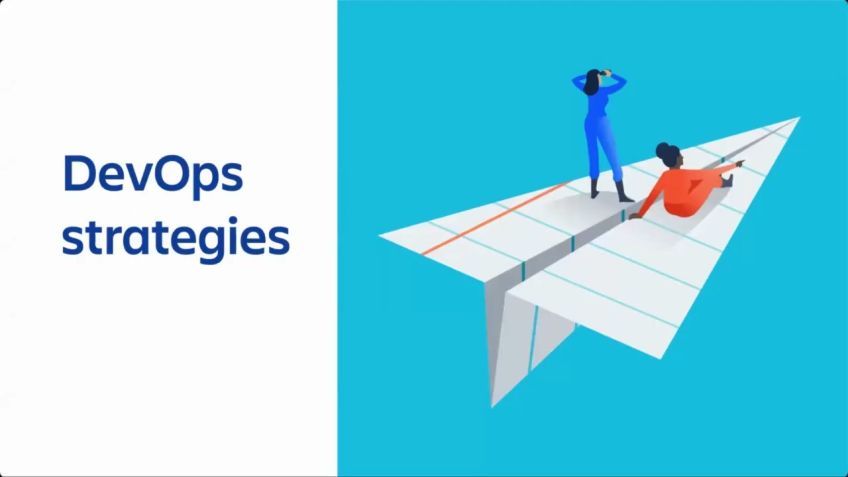What does your team need to thrive?
Rocio Fernandez
Director of Product at PlayMPE and CEO & Co-Founder atUnderstanding the 12 Dimensions of a Thriving Team
Hello, everyone! Today we are going to attempt to answer an important question: What does your team need to thrive?
Why is Harmony Important in a Team?
In our fast-paced and ever-changing work environment, a variety of factors such as stress, conflict, enjoyment, and a sense of belonging are crucial for building a successful team. These elements don't just contribute to the wellbeing of the team but can also significantly affect overall productivity and performance. Relax and fret not if this seems too complex; we'll go through these factors and discuss implementing a framework to improve the way you work.
What are the 12 Dimensions of a Thriving Team?
Ro Fernandez, CEO and co-founder at Nova, will share these fundamental dimensions and provide a flexible framework to create an environment where your team can thrive.
Let us start by examining these dimensions:
- Trust: Inter-team trust is a cornerstone element for successful team dynamics. It manifests in team members' ability to openly share opinions, concerns, and even discuss mistakes.
- Conflict: Successful teams don't shy away from conflict. Quite the contrary, it's about team members feeling comfortable sharing divergent ideas without fear of punishment.
- Enjoyment: Enjoyment at work is connected to ensuring that tasks align with what team members love to do, enhancing their enthusiasm for their work.
- Belonging: Belonging has shown to reduce employee turnover by 50% and increase job performance by 56%. It's about providing a platform where everyone's work is admired and appreciated.
- Commitment & Accountability: For a team member to show commitment, they have to understand the reasoning and outcome of their tasks. Coupled with accountability, this ensures everyone fulfills their responsibilities.
- Purpose & Value: A sense of purpose and value provides the team members with a sense of meaning in their work, fostering increased productivity.
- Productivity & Performance: Equipping teams with the resources, support, and knowledge they need to effectively manage their time and prioritize their tasks is paramount.
- Learning & Growth: Providing opportunities for learning and growth keeps teams engaged and challenged, fostering an innovative work culture.
- Guidance: An effective manager supports their team, understanding their individual needs and coaching them accordingly.
- Results: Results-orientation encourages teams to stay focused, shaping their strategies around achieving specific results rather than completing a list of tasks.
While some aspects are interrelated, others call for the honing of core management skills. Factors such as team norms and culture also play a significant role.
How to Measure and Improve Your Team's Health
Monitoring your team's health and finding areas of improvement could be done through various techniques:
- Conducting regular surveys with specific questions about the dimensions of a thriving team.
- Initiating one-on-one sessions with team members to gauge their emotions and overall wellbeing.
- Integrating a self-evaluation checklist for managers for routine introspection and opportunities for improvement.
Using this comprehensive framework, you can quickly identify weak points in your team's synergy and embark on a journey of continuous growth and transformation, ensuring your team does more than just survive - it thrives.
Got any doubts about these concepts or dimensions? Maybe you've noticed a drop in team productivity, or you respect the power of collective ability and want to know how to harness it better. Feel free to reach out.
Creating a Workspace Where Teams Can Thrive
Establishing a thriving team isn't an end in itself. It's a long-term commitment that needs constant evaluation of its strengths and weaknesses. You can proactively brainstorm activities to implement within the next 30 to 90 days or a year for each dimension - trust, conflict, enjoyment, belonging, commitment and accountability, purpose and value, productivity and performance, learning and growth, guidance and results - to enhance your team's dynamics and productivity.
Remember, your team is unique, and what works for others may not work for you. Tailor your approaches to cultivate an environment suitable to your team's unique dynamics.
Thank you for making the considerable commitment to your teams, and remember, excellence is a habit, not an act!
Video Transcription
Hi, everyone. How uh how is everyone today? How is your energy? Well, what does your team need to thrive? That is the question for today.So in today's fast paced and ever changing work environment, things as such as stress, conflict, enjoyment, and sense of belonging are crucial for building a successful team, not just a successful team, but a team that can thrive. So these are just a few factors that can contribute to the well being of the team uh but also can overall affect productivity and performance of the team. And don't worry if you don't see it really well right now because we're gonna go through these factors and talk about how you can implement a framework that can help you improve the way you work. So what are the necessary elements for a team to thrive? My name is Ro Fernandez. I'm the CEO and co-founder at Nova. Today, I will discuss with you the 12 dimensions. So 12 dimensions of a thriving team. My goal is not only to share these dimensions with you but also provide a flexible framework that you and your team can use to create an environment where your team can thrive and not just survive. So let's go over those dimensions.
So we start from trust and you see that we go through conflict enjoyment all the way through results. And we are gonna be describing all these dimensions today. Um talking a little bit about how it affects the team, how to think about them and also how you can use a framework and create an action plan, a plan to to in increase how your team is engaged and their productivity. So let's do that. So here are the first three dimensions. These dimensions are considered the fundamentals. Some teams have higher scores in other areas. But if they don't put in the effort to ensure these three fundamentals are covered, they are probably not gonna see the results that they are looking for that they are expecting. So let's start with trust. So trust is a co a key fundamental dimension but not all teams have mastered. It is often politics, ego and authority that gets in a way. Trust is the ability of team members to show vulnerability and share their opinions, openly, share concerns and discuss even mistakes. The second dimension is conflict and you are probably thinking about conflict management. So it's not just about teams, the team's ability to manage conflict, but rather is to focus on how comfortable teams are uh and feel sharing opposite ideas without the fear of punishment.
It's how likely a team member is to disagree. With the highest paid person in the room and how likely team members are to engage in a healthy and productive discussion. This is also known as creative abrasion and is the ability for teams to have very heated and constructive arguments to create a portfolio of alternatives, to be able to predict risk and challenges on early stages of an idea. The third fundamental is enjoyment, which has become an essential dimension in, in the for for the latest generations, enjoyment at work is connected to the ability to hire the right people based on the task that they are gonna be doing on daily basis and less about running team building activities.
It's about ensuring that task are basically align with what team members love to do. So they overall enjoy what they do at work and they feel enthusiastic about going to work. Now, let's move to the next section. Um Let me do that. And in here, we have belonging, commitment and accountability. So to be committed, team members should be involved in the decisions and fully understand the outcome of reasoning and the reasoning of an activity. So uh they are committed in here because usually they believe in the process, but they also believe in the results, they are committed because they are part of it because they belong because it matters to them. But a team member can be committed and not accountable. So it's also important to keep accountability in mind and create spaces where team members, including managers, hold each other accountable and they feel that they can count on each other to get things done. It is never enjoyable going to work while being unsure if a team member will do their part or feeling that you cannot hold them accountable because it need, it needs to be escalated to a manager. So it's important that accountability exist among team members and all team members.
You have the ability to bring attention to those who are not carrying their weight. Managers should support those who are proactive and create a space where progress and work are transparent to to to everyone in the team. And it's not about control. It's about transparency about creating a fair space for those who are doing things, right? So let's chat about belonging. So belonging impacts the bottom line from lowering employee turnover by 50% to increasing job performance by 56%. Belonging is connected to the self sense of purpose and value where one purpose and value is the ability to understand one's purpose and value and how it feels to be needed or missed when one's 11 is is gone while the other, the sense of belonging, the one that we are talking right now about is the sense that other people in the team provides you with by recognizing, welcoming and admiring your work.
It is important to highlight that to improve employee turnover um and performance organizations and team members like yours, we need to explore how can, how they can create a space where people feel like they belong. So let's continue with number seven, as we already mentioned, the sense of purpose and value. So it's important again to recognize that the sense of belonging depends on the sense of purpose and value. But let's let's move there to the next section. So moving back to productivity and performance, this dimension only focuses on processes and improvement to reduce waste or increase productivity. But it's about giving teams the support and also the knowledge they need to be able to manage their time, identify what it is important versus urgent.
So it's important that they understand the the goals of the organization and how you want them to manage those priorities and being able to make decisions and prioritize their work to holistically benefit the organization. So once we have, we got here, we can move to learning, stress growth and results and we are gonna go through that section now. So we are gonna start with stress learning growth and guidance. The next three dimensions are that are basically things that organizations are putting some focus on in the, in the last few years. In fact, maybe your organization is paying for learning and training outside of work but not creating maybe opportunities for employees where they feel like they're being challenged at work. And that is important because if you are, you are supporting um learning and training outside of work.
You are not creating and you are not creating that environment inside of work. Then um this is probably not affecting the overall um engagement at work. So um by challenging, I mean, giving the opportunity to be part of tasks and projects that are outside of their bread and butter. And it's about feeling that you are using your brain power and just not doing just mundane work. So this dimension refers to the ability the organization and the manager has to ensure w work is challenging uh enough to keep the team engaged, who is creative and where is a space to grow. If we look at dimensions nine at 11, these dimensions are often connected to how managers support their teams and their ability to coach them and help them manage their work panes, just give me a minute. I'm just gonna drink a little bit of water. Sorry about that. So here, the highlight is the ability managers have to support, grow and guide their teams understanding that each individual is different and they will need different ways to support them, coaching and guide and guide them. Well, these three dimensions are different, different and directly depend on the manager's capabilities and skills. The organization overall needs to provide the resources and tools for managers to ensure they have the time, the capacity and also the resources they need to support their teams.
Lastly, but not least we have results. So uh in here, a result oriented mindset and a space that is oriented that way is um that if you have an organization and, and team that is driven by results, metrics should serve as a guiding force um overall. And this dimension means that you encourage your team to shape their strategies around achieving a specific results rather than completing a list of tasks. While plans may change, the desired results should remain constant. So the goal is always making sure that you are shifting strategies and they can make decisions based on how they can achieve those goals and success will be measured that that way. So these are the 12 dimensions of a successful and, and thriving team. Some of them are directly connected while others depends on the manager's capabilities, skills and also things like team norms and culture are also involved. Um um But it's important that now you need, you have like a method to measure which dimensions you need to improve. So let's do that. So here are a few simple techniques that you can use to measure your team's health and identify the areas of improvement. Uh For example, you can create a survey, adding a statements like this and you will determine if you want to send this on a yearly basis every six months or if you want to do this more often, you can send uh a short Tulse to, to basically evaluate how things are going.
So you initially will do that to evaluate the current status of your organization and understand your weaknesses and your strengths. And while, while you have that, um you are gonna implement a few techniques to improve your current status. And this will be used after to measure and evaluate if those initiatives are working the next um the next way to validate how things are going and getting a sense. If things are working out for, you will be um leading a one on one meeting and asking questions like how was your ability to focus this week? How is your energy today and things like that? So you are getting a sense of how people are feeling and a sense of overall. How is the organization moving? The next one is one that I find especially important and I found very, very effective is uh a self evaluation checklist for managers. This help managers create time in their busy days and create the space for self reflection, giving them themselves a proactive opportunity to look for ways to improve. This is also extremely important because it helps managers understand how the organization overall uh measures their success and what is expected from them. So this is another way to evaluate, to self, evaluate yourself as a manager.
So what should you do to create a work space where teams can thrive? So I'm going to give you a framework that you can use. So once, once a team, the team manager have an idea what needs to be improved and how they are doing. Currently, they can use this flexible framework to think about uh the type of activities they could implement uh to create that environment and culture where the team can thrive. I have decided to give you this framework instead of giving you directly uh a few tips because I wanted to make sure that um I keep in mind that each organization is different, that your team is different, that your circum facets are different. And it's important for me that you go walk away from this, this session with something that you can use in whatever, in whatever stage you are at. So I want it is important for me that you start by evaluating your strengths and your weaknesses and you can choose and brainstorm about the activities that you especially can start implementing in the next, in the next 30 to 90 days. So the framework looks like this. This is the same framework that I showed you at the beginning. And as you see now, you probably recognize some of these, some of these um dimensions. So as you see, we start with trust and we finish with the results.
And what is happening here is that you are gonna think about uh the activities that you can implement in the next 3030 days, 90 days and one year uh for each of them and you will start with trust and move to the next section to make sure that your company is overall um tackling those dysfunctional dimensions.
In here, I add, added a um QR codes that you can use. And if you go there, you basically will see this example and you can access to some ideas, but also you have this this framework over there and I can help you through that process. So using this framework, team managers, like you can reshape the way teams work and think about the company and provide a strong work environment where your team can thrive. So do you have any questions about this framework or if you have any questions about the 12 dimensions of if you have seen any changes in the organization, maybe your team is less productive, less engaged and you wanna talk about it. Uh I will leave a few minutes at the end of this session for you to uh to ask questions, but also um you feel free to call, contact me over linkedin um or ask me questions then. But before we move into questions, I wanted to share my appreciation and admirations to, to the woman in tech team for making this happen and especially for empowering women to share their voice. But also I want to share my appreciation for, with all of you that are here today uh for making your teams a priority. Thank you. Any questions? I don't see any questions right now on the chat. But as I mentioned before, you can contact me on linkedin.
Um for more information, I would be happy to share my presentation with you with all my notes and give you access to that framework as well. Please add do your questions while we have time on the chat. I will be happy to add those there. Maybe you have experience um that your team is less productive, maybe less engaged. Maybe you have questions about these 12 dimensions. I see a question coming. Um And how do you establish trust with your manager? That is a good question. So uh my guess is that you are asking, you are asking uh how is the opposite between instead of the manager creating that sense of trust the person, make sure that the manager and and you there is trust between both of you. Um So that is a really good question. So it matters, it matters a lot, the circumstances and why you believe the manager doesn't trust you in this case? Is it because the manager don't often have enough information? Is it because or their circumstances and it will be key to understand their management style? So that will be my first tip. Really understand who they are as a, as a person. What what type of mm what type of information they need to make sure that they feel confident about working with you. So I need to end the session right now.
Uh but I will please contact me if you have questions and I can send you a bunch of lists about trust and how to create trust within the team. And please let me know if, if that helps. Thank you very much.






